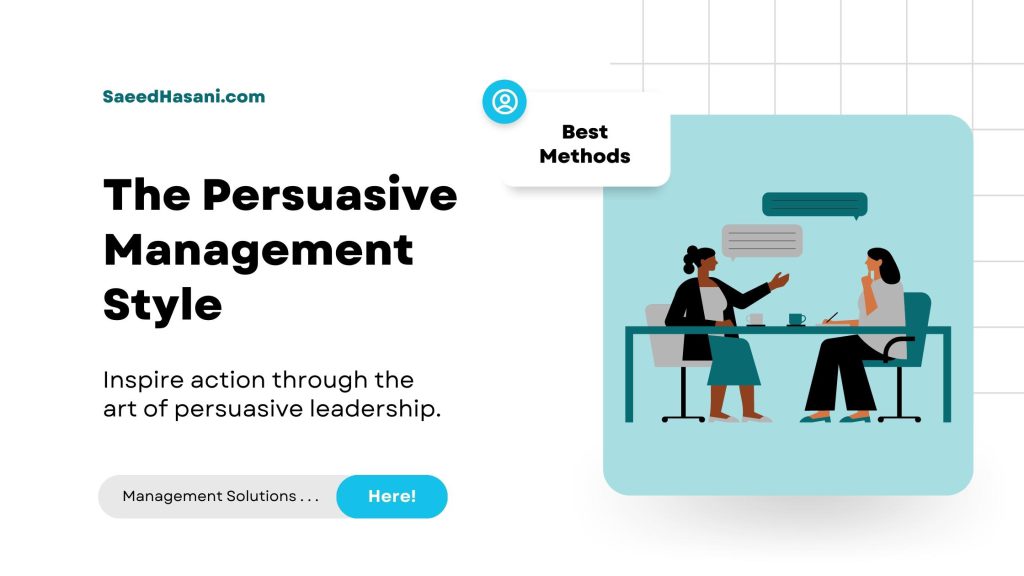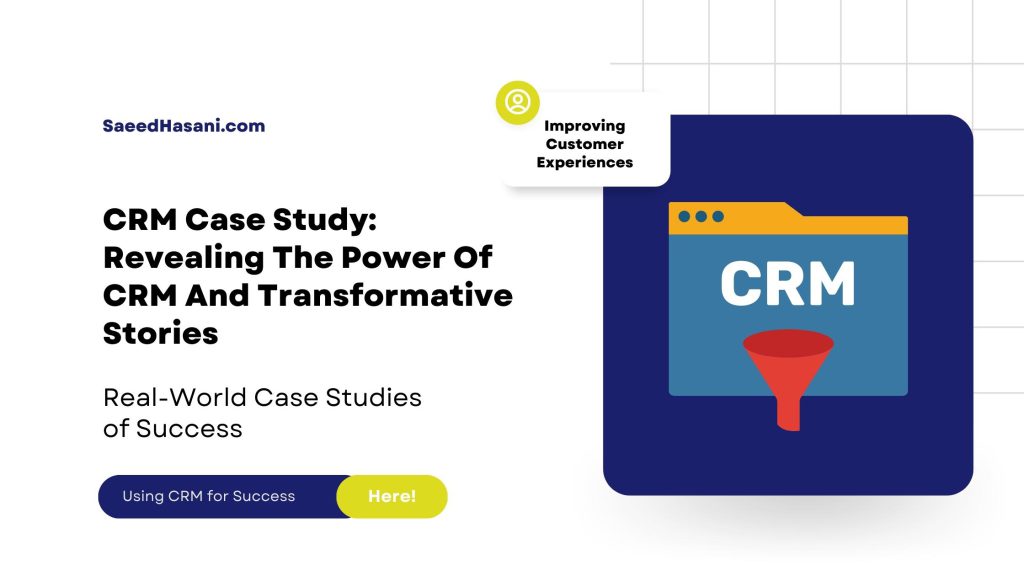Pipeline Generation Comprehensive Guide: 7 Beginner and Advanced Strategies!

Are you looking to boost your sales game and streamline your process? Understanding and effectively managing pipeline generation is key.
By mastering this systematic approach, you can turn potential leads into loyal customers, ensuring a steady flow of opportunities for your business.
Let’s explore the essentials of pipeline generation and how it differs from lead generation to optimize your sales strategy.
Content Overview:
What is Pipeline Generation?
Pipeline generation refers to the systematic process of managing and tracking prospects through various stages of the sales funnel to increase the likelihood of closing deals.
It involves defining criteria for moving prospects between stages, employing strategies to refine leads, and ensuring a steady flow of opportunities. Unlike lead generation, which focuses on immediate conversions, pipeline generation is about maintaining long-term engagement and awareness.
Effective pipeline generation helps sales teams understand customer behavior, create personalized campaigns, improve sales forecasting, and align marketing with sales efforts.
Differences Between Pipeline Generation and Lead Generation
Understanding the differences between pipeline generation and lead generation is crucial for any business looking to optimize its sales process. Let’s break it down!
Lead Generation
Lead generation is like the first date in the sales world. It’s all about identifying and attracting potential customers who might be interested in your product or service. Think of it as casting a wide net to see who bites. Here’s what it typically involves:
- Attracting Interest: This is done through various marketing strategies like social media campaigns, content marketing, webinars, and more.
- Collecting Information: When someone shows interest, you gather their contact details. This might be through a form on your website, a sign-up for a newsletter, or a free trial.
- Qualifying Leads: Not every lead is worth pursuing. You need to assess if they have the potential to turn into a paying customer. This can be done by looking at their level of interest, their needs, and whether they fit your target market.
Lead generation is about building a pool of potential customers that your sales team can then work on converting.
Pipeline Generation
Pipeline generation, on the other hand, is a bit more advanced. It’s the process of moving those qualified leads through the sales funnel toward making a purchase. It’s like turning those initial dates into a committed relationship. Here’s what’s involved:
- Nurturing Leads: Once you have qualified leads, you need to keep them engaged. This can involve personalized email campaigns, follow-up calls, and providing additional information to address their specific needs.
- Tracking Progress: Each lead is tracked through different stages of the sales funnel. This helps you understand where they are in their buying journey and what actions need to be taken next.
- Closing Deals: The ultimate goal of pipeline generation is to convert leads into paying customers. This involves negotiations, addressing any objections, and finalizing the sale.
Key Differences
- Stage in Sales Process: Lead generation is at the top of the funnel, focusing on attracting and identifying potential customers. Pipeline generation is further down the funnel, focusing on nurturing and converting these potential customers.
- Goals: The goal of lead generation is to create a list of potential customers. The goal of pipeline generation is to turn these potential customers into actual buyers.
- Activities Involved: Lead generation involves activities like content marketing and advertising to attract interest. Pipeline generation involves activities like follow-up communications and sales tactics to close deals.
Why Both Matter
Both processes are crucial for a successful sales strategy. Lead generation fills your funnel with potential customers, ensuring you have a steady flow of prospects. Pipeline generation ensures that these prospects are guided effectively through the buying process, leading to actual sales and revenue.
Think of lead generation as the process of finding people who might be interested in dating you, while pipeline generation is about building a relationship with those people and eventually making a commitment. Both are essential steps in the journey from stranger to loyal customer.
What are the Benefits of Pipeline Generation?
Pipeline generation is a crucial aspect of the sales process, and its benefits can significantly impact the success and efficiency of your business. Here are some key benefits of pipeline generation:
1. Improved Sales Forecasting
By tracking leads through various stages of the sales funnel, pipeline generation provides a clearer picture of future sales. This enables better forecasting and planning, helping businesses allocate resources more effectively.
2. Enhanced Lead Management
Pipeline generation helps in organizing and managing leads systematically. It allows sales teams to prioritize high-potential leads, ensuring that they focus their efforts on prospects who are more likely to convert.
3. Increased Conversion Rates
With a structured approach to nurturing and engaging leads, pipeline generation increases the likelihood of converting leads into customers. By addressing the specific needs and concerns of each lead, sales teams can build stronger relationships and close more deals.
4. Better Sales Team Performance
A well-defined sales pipeline provides sales teams with clear goals and milestones. This can boost motivation and productivity, as sales reps have a clear understanding of their targets and the steps needed to achieve them.
5. Efficient Use of Marketing Resources
Pipeline generation helps in identifying which marketing efforts are most effective at moving leads through the sales funnel. This allows businesses to optimize their marketing strategies, focusing on activities that yield the best results.
6. Enhanced Customer Insights
By tracking interactions and progress through the sales pipeline, businesses gain valuable insights into customer behavior and preferences. This information can be used to tailor sales and marketing efforts to better meet the needs of different customer segments.
7. Reduced Sales Cycle Time
A well-managed sales pipeline helps in identifying and addressing bottlenecks that might be slowing down the sales process. By streamlining the journey from lead to customer, businesses can reduce the overall sales cycle time.
8. Improved Customer Experience
Pipeline generation involves consistent follow-ups and personalized communication, which enhances the overall customer experience. By providing timely and relevant information, businesses can build trust and rapport with their prospects.
9. Data-Driven Decision Making
With detailed tracking and analysis of the sales pipeline, businesses can make informed decisions based on data. This helps in identifying trends, spotting opportunities for improvement, and making strategic adjustments to the sales process.
10. Scalability
As your business grows, having a robust sales pipeline in place ensures that your sales process can scale effectively. It provides a framework for managing an increasing number of leads without compromising on the quality of engagement.
Pipeline generation offers numerous benefits that enhance the efficiency, effectiveness, and scalability of your sales process. By providing a clear structure for managing leads and optimizing the journey from prospect to customer, it plays a vital role in driving business growth and success.
What are the Challenges to Pipeline Generation?
Let’s talk about the challenges you might face with pipeline generation.
1. Finding Quality Leads
One of the biggest hurdles is identifying high-quality leads. It’s not just about getting a lot of names and emails; it’s about finding those who are genuinely interested and have the potential to become paying customers.
This can be tricky because it involves understanding your target market really well and continually refining your lead generation strategies.
2. Lead Nurturing Takes Time
Once you have those leads, you can’t just let them sit there. Nurturing leads through the pipeline takes time and effort.
It involves regular follow-ups, personalized communication, and addressing their specific needs and concerns. This can be resource-intensive, especially if you’re dealing with a large number of leads.
3. Keeping the Pipeline Organized
Managing the pipeline can get chaotic, especially as it grows. Keeping track of where each lead is in the process, what their status is, and what the next steps are can be overwhelming without a good CRM system in place. Organization is key to making sure no lead falls through the cracks.
4. Aligning Sales and Marketing
Sales and marketing teams often have different goals and perspectives. Aligning these teams to work seamlessly together can be a challenge.
Marketing might focus on generating a high volume of leads, while sales might be more concerned with the quality of those leads. Bridging this gap is crucial for a smooth pipeline.
5. Measuring Effectiveness
Figuring out what’s working and what’s not in your pipeline can be tough. It involves tracking various metrics and constantly analyzing data to understand which strategies are effective. This can be complex and time-consuming but is necessary to optimize the pipeline.
6. Handling Rejections
Not every lead will convert, and dealing with rejections is part of the process. It can be discouraging, but it’s important to stay motivated and learn from each rejection. Understanding why a lead didn’t convert can provide valuable insights for improving your approach.
7. Adapting to Market Changes
Market conditions and customer behaviors change over time. Keeping your pipeline strategy flexible and adaptable is essential. This means staying updated with industry trends, continually learning, and being ready to pivot your approach when necessary.
8. Maintaining Consistent Communication
Regular and consistent communication with leads is crucial, but it can be challenging to maintain. Automated tools can help, but they need to be used thoughtfully to ensure the communication feels personal and relevant to each lead.
9. Training and Development
Your sales team needs to be well-equipped to handle the pipeline effectively. This means ongoing training and development to keep their skills sharp and their knowledge up-to-date. Investing in your team is essential, but it requires time and resources.
10. Balancing Quantity and Quality
It’s a delicate balance between having enough leads to keep the pipeline full and ensuring those leads are of high quality. Focusing too much on quantity can dilute your efforts and overwhelm your sales team while focusing too much on quality can result in a sparse pipeline. Finding the right balance is key.
Pipeline generation is not without its challenges. It requires a lot of effort, strategic thinking, and continuous improvement. But addressing these challenges head-on can lead to a more effective sales process and ultimately, greater business success.
7 Pipeline Generation Strategies [Beginner]
Let’s dive into some effective beginner pipeline generation strategies. Here are seven strategies to help you build and maintain a strong sales pipeline:
1. Content Marketing
Content is king, right? Creating valuable and relevant content can attract potential customers to your brand. Blog posts, eBooks, webinars, and videos can educate your audience, showcase your expertise, and generate interest in your products or services.
Make sure your content addresses the pain points and needs of your target market, making it easier to draw them into your pipeline.
2. Social Media Engagement
Social media isn’t just for selfies and cat videos. It’s a powerful tool for connecting with potential leads. Regularly posting engaging content, participating in conversations, and responding to comments can help build relationships with your audience.
Platforms like LinkedIn are particularly effective for B2B businesses. Don’t just post and ghost—stay active and interactive!
3. Email Marketing
Email isn’t dead; it’s thriving! Building an email list and sending targeted, personalized emails can keep your leads engaged and moving through the pipeline.
Share valuable content, updates, and special offers tailored to their interests. Automation tools can help manage this process, but make sure your emails still feel personal and relevant.
4. Networking and Events
Good old-fashioned networking still works wonders. Attending industry events, conferences, and trade shows can put you in direct contact with potential leads.
Don’t just collect business cards—follow up with personalized messages and keep the conversation going. Virtual events and webinars are also great for connecting with a broader audience.
5. Search Engine Optimization (SEO)
SEO is all about making sure your website shows up when people are looking for what you offer. By optimizing your website content for relevant keywords, you can attract organic traffic from search engines.
The better your SEO, the more likely you are to get in front of potential leads who are actively searching for solutions like yours.
6. Referral Programs
Word of mouth is powerful. Creating a referral program encourages your existing customers to recommend your products or services to others.
Offer incentives like discounts, freebies, or exclusive access to motivate them. Happy customers are often more than willing to spread the word, bringing in high-quality leads who already trust your brand.
7. Paid Advertising
Sometimes, you need to give your pipeline a boost with paid advertising. Platforms like Google Ads, Facebook Ads, and LinkedIn Ads allow you to target specific audiences with precision.
Use ads to drive traffic to landing pages, promote special offers, or highlight key content. Make sure your ads are compelling and relevant to attract the right leads.
Putting It All Together
A successful pipeline generation strategy often involves a mix of these tactics. Content marketing might attract initial interest, while social media and email marketing nurture those leads. Networking and events can provide direct contact, and SEO ensures you’re visible when potential customers are searching. Referral programs and paid advertising can further boost your efforts.
Remember, consistency and personalization are key. Regularly review and adjust your strategies based on what’s working and what’s not. By combining these approaches, you can create a robust pipeline that keeps your sales team busy and your business growing.
7 Pipeline Generation Strategies [Advanced]
Here are seven advanced pipeline generation strategies that can give your sales efforts a fresh boost:
1. Host Virtual Events and Workshops
Virtual events are a fantastic way to engage with potential leads. Think beyond traditional webinars and consider hosting interactive workshops, Q&A sessions, or virtual roundtables.
These events can be more engaging and provide immediate value to attendees, helping you build a strong connection from the start. Plus, you can showcase your expertise and gain insights into the specific needs and interests of your audience.
2. Leverage Influencer Partnerships
Collaborate with influencers in your industry to tap into their audience. Influencers can help you reach a wider and more engaged audience by promoting your products or services.
This strategy works well because people tend to trust recommendations from individuals they follow and respect. Find influencers whose values align with your brand and who have a genuine interest in what you offer.
3. Create Interactive Content
Interactive content can significantly boost engagement. Think along the lines of quizzes, surveys, calculators, or interactive infographics.
These tools can be both fun and informative, capturing the interest of potential leads. For example, a quiz that helps users determine which of your products best suits their needs can draw them deeper into your pipeline.
4. Run Social Media Contests and Giveaways
Everyone loves a good contest or giveaway! Use social media to run contests that require participants to engage with your content, share your posts, or refer friends.
This not only increases your visibility but also attracts new leads. Make sure the prizes are enticing and relevant to your audience to maximize participation and interest.
5. Develop a Unique Content Series
Create a series of content pieces that build upon each other, such as a multi-part blog series, a video series, or a podcast. This approach keeps your audience coming back for more and helps establish your authority in your field.
Each installment can be used as an opportunity to capture new leads by offering exclusive content or early access in exchange for contact information.
6. Use Gamification
Gamification adds an element of fun and competition to your lead generation efforts. Create challenges, leaderboards, or reward systems that encourage prospects to engage with your brand.
For example, you could develop a points system for completing certain actions, such as downloading a whitepaper, attending a webinar, or referring a friend. Rewards can range from discounts to exclusive access to events or content.
7. Personalized Video Outreach
Stand out from the crowd with personalized video messages. Instead of sending standard emails, create short, personalized videos for your prospects.
Mention their name, reference their specific interests or needs, and explain how your product or service can benefit them. This approach can be highly engaging and shows that you’ve put in the extra effort to connect on a personal level.
Bringing It All Together
Combining these advanced strategies can inject new life into your pipeline generation efforts. Hosting virtual events and workshops can capture initial interest, while influencer partnerships and interactive content keep the engagement high.
Social media contests, content series, and gamification add excitement and a sense of community, and personalized video outreach ensures a personal touch that can convert leads into customers.
Experiment with these strategies, see what resonates best with your audience, and don’t be afraid to think outside the box. Creativity can be a powerful tool in building and maintaining a robust sales pipeline!
How to choose a successful Pipeline Generation Strategy?
Choosing a successful pipeline generation strategy can feel like picking the right tool from a very crowded toolbox. It’s all about finding the strategies that best fit your business needs, target audience, and resources. Here are some tips to help you make the right choice:
1. Understand Your Audience
First and foremost, know your audience inside and out. What are their pain points, interests, and behaviors? Are they more likely to engage on social media, through email, or in person? Use surveys, feedback, and data analytics to gather this information.
The better you understand your audience, the easier it will be to choose strategies that resonate with them.
2. Set Clear Goals
What are you hoping to achieve with your pipeline generation strategy? Are you looking to increase the number of leads, improve lead quality, shorten the sales cycle, or something else? Having clear, measurable goals will help you focus your efforts and choose strategies that align with your objectives.
3. Evaluate Your Resources
Take a good look at your resources, including your budget, time, and team capabilities. Some strategies, like paid advertising, might require a larger budget, while others, like content marketing, need more time and effort.
Make sure you have the necessary resources to implement and sustain the strategies you choose.
4. Leverage Your Strengths
Play to your strengths. If your team excels at creating engaging content, focus on content marketing and social media. If you have strong connections in your industry, networking and partnerships might be your best bet. Leveraging your strengths will make your efforts more effective and efficient.
5. Test and Iterate
Don’t be afraid to experiment with different strategies. Start with a few that seem promising and track their performance closely. Use A/B testing to see what works best and be ready to pivot if something isn’t delivering the desired results. The key is to continually refine your approach based on what you learn.
6. Look at Your Competitors
Check out what your competitors are doing. This doesn’t mean you should copy them, but understanding their strategies can give you insights into what works (and what doesn’t) in your industry. Look for gaps in their approach that you can exploit or areas where you can do something unique.
7. Consider the Customer Journey
Think about the entire customer journey from awareness to decision. Your pipeline generation strategies should address each stage of this journey.
For example, content marketing might be great for attracting interest at the top of the funnel, while personalized outreach might be more effective at the bottom of the funnel.
8. Align Sales and Marketing
Ensure that your sales and marketing teams are on the same page. A successful pipeline generation strategy requires close collaboration between these teams. Marketing generates and nurtures leads, while sales focuses on converting them. Regular communication and alignment on goals and tactics are crucial.
9. Use Data and Analytics
Data is your best friend when choosing and refining your strategies. Use analytics to track the performance of your efforts and gain insights into what’s working. Look at metrics like lead conversion rates, engagement levels, and the cost per lead to make data-driven decisions.
10. Stay Flexible
The business landscape is always changing, and so are the needs and behaviors of your audience. Stay flexible and be ready to adapt your strategies as needed. Regularly review and update your approach based on new trends, technologies, and feedback from your leads and customers.
Choosing a successful pipeline generation strategy is a dynamic process. It involves understanding your audience, setting clear goals, leveraging your strengths, and continuously testing and iterating.
By staying flexible and data-driven, you can refine your approach and build a robust pipeline that keeps your sales team busy and your business growing.
Remember, there’s no one-size-fits-all solution. It’s all about finding what works best for your unique situation and being ready to adapt as you go. Happy strategizing!
Conclusion
In summary, mastering pipeline generation is essential for creating a robust and efficient sales process.
By understanding the differences between pipeline and lead generation, leveraging creative strategies, and addressing potential challenges, you can ensure a steady flow of high-quality prospects and successful conversions.
Embrace these practices to drive growth and achieve long-term success in your sales efforts.







Responses